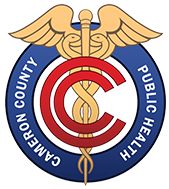

What is type-1 and type-2 diabetes?
Type-1 Diabetes
If you have type 1 diabetes, your body does not make insulin. Your immune system attacks and destroys the cells in your pancreas that make insulin. Type 1 diabetes is usually diagnosed in children and young adults, although it can appear at any age. People with type 1 diabetes need to take insulin every day to stay alive.
Type-2 Diabetes
Resources in Cameron County

What Health Problems Can People with Diabetes Develop?
Over time, high blood glucose leads to problems, such as heart disease, stroke, kidney disease, eye problems, dental disease, nerve damage, and foot problems.
What causes it
What is Gestational Diabetes?
According to the Centers for Disease Control and Prevention (CDC), “Gestational diabetes is a type of diabetes that can develop during pregnancy in women who don’t already have diabetes” (2021)
The National Institute of Diabetes and Digestive and Kidney Diseases (NIDDK) stated, “Gestational diabetes occurs when your body can’t make the extra insulin needed during pregnancy. Insulin, a hormone made in your pancreas, helps your body use glucose for energy and helps control your blood glucose levels” (2017).


Gestational Health Problems
The CDC states that having gestational diabetes can increase your risk of high blood pressure during pregnancy. It can also increase your risk of having a large baby that needs to be delivered by cesarean section (C-section).
If you have gestational diabetes, your baby is at higher risk of:
- Being very large (9 pounds or more), which can make delivery more difficult
- Being born early, which can cause breathing and other problems
- Having low blood sugar
- Developing type 2 diabetes later in life
- Being active. Regular physical activity that’s moderately intense (such as brisk walking) lowers your blood sugar and makes you more sensitive to insulin so your body won’t need as much. Make sure to check with your doctor about what kind of physical activity you can do and if there are any kinds you should avoid.
- Monitoring your baby. Your doctor will check your baby’s growth and development.
Treatment
You can do a lot to manage your gestational diabetes. Go to all your prenatal appointments and follow your treatment plan, including:
- Checking your blood sugar to make sure your levels stay in a healthy range.
- Eating healthy food in the right amounts at the right times. Follow a healthy eating plan created by your doctor or dietitian.

Credits
American Diabetes Association (ADA).
Centers for Disease Control and Prevention (CDC).
National Institute of Diabetes and Digestive and Kidney Diseases (NIDDK).
Our Clinics
Joe. G. Rivera & Aurora de la Garza | Cameron County Annex Building
1390 W. Expressway 83
San Benito, Texas 78586
956 247-3685
